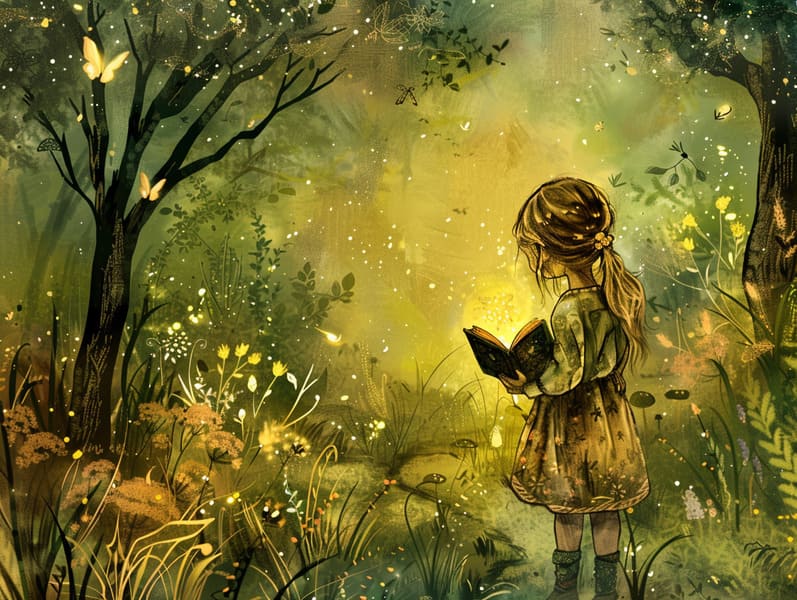The Emergence of Famous Fairy Tales and the Invariable Appeal.
The Emergence of Famous Fairy Tales and the Invariable Appeal.
Blog Article

Traditional fairy tales have timeless appeal. These tales have been shared from one generation to the next far before they were ever transcribed. They were born from a variety of civilizations, including American traditions. They were initially passed along among mature audiences, often carrying themes and messages reflective of the societal norms and beliefs of the time.
The famous Grimm duo, Jacob and Wilhelm, were among the first to gather and publish many of these beloved fairy tales. Their collection, "Grimm's Fairy Stories," included narratives like "Cinderella," "Little Brother and Little Sister," and "Schneewittchen," which have since become pillars in the world of timeless fairy tales. Similarly, H. C. Andersen's enchanting fairy tales, such as "The Mermaid," and "The Ugly Duckling," have stolen hearts worldwide, cementing their place in the pantheon of iconic fairy tales.
Despite being ancient, fairy tales remain as pertinent as ever, especially as children's night stories. These charming stories are now available in numerous formats, including beautifully illustrated books, enchanting animations, and digital storybooks.
Their persistent charm can be credited to several whimsical characteristics:
Crucial Morals: Old fairy tales often provide important moral lessons. Stories like "The Shepherd Boy and the Wolf" teach the benefit of truthfulness, while "The Race of the Tortoise and the Hare" underline the values of resolve and humility. These narratives offer children clear distinctions between ethical and unethical, building their moral compass in a tender yet important way.
Empathy and Awareness: Classic fairy tales frequently include protagonists facing obstacles and hardships, stimulating audiences to empathize with their struggles and root for their triumphs. For instance, "Beauty and Her Beast" shows us the necessity of looking beyond appearances to perceive the true essence of a person, promoting tenderness and knowledge.
Cultural Understanding: Many timeless fairy tales are imbued with the cultural contexts from which they blossomed. Reading these stories can provide intriguing perspectives into different historical contexts, building a sense of world respect and discernment.
Fantasy and Innovation: The fantastical elements in traditional fairy tales—wizardry and magic—generate children’s imaginations. These stories bring readers to otherworldly realms, encouraging fantasy ideas and a sense of amazement that lasts a lifetime.
Traditional fairy tales are not only entrancing but also educational. They work as delightful tools in building various brain and heart skills in children. When old fairy tales are narrated, they enhance language acquisition by bringing new language items and complicated sentence structures. This practice also develops auditory perception and attentiveness, as little ones keep up with the story, ready to see what happens next.
Furthermore, discussing the themes and characters of fairy tales can advance thought processes and evaluative skills. Little ones are taught to discern patterns, expect results, and catch on to cause and effect. These analyses also ease the young voice their thoughts and feelings, strengthening their emotional intelligence.
In today’s high-tech era, the proliferation of free fairy tales online has made these stories more within reach than ever. Websites and online apps give broad selections of popular fairy tales that can be seen or listened via anytime, anywhere. Fairy tales recited are particularly widespread, supplying an fun way for young readers to relish these enchanting tales. Spoken stories and read-to-me videos move characters and settings to life, often supplemented by mesmerizing music and melodies that amplify the tale-telling adventure.
The timeless fascination of classic fairy tales lies in their ability to adapt to modern days while retaining their underlying messages. Contemporary renditions of these fairy tales often spotlight more varied protagonists and modern settings, making them accessible to today’s audience. However, the fundamental themes of courage, generosity, and even-handedness remain unchanged, continuing to connect with audiences of all ages.
Classic fairy tales also offer a sense of reassurance and understanding. They highlight a structured narrative with a obvious beginning, middle, and end, often winding up with the ending of conflicts and the triumph of virtue over vice. This predictability can be calming for the young, affording a sense of security in an fluctuating world.
Old fairy tales continue to entrance and train new generations, maintaining their majesty and pertinence in modern society. As kids' bedtime tales, they showcase a perfect blend of charm and enlightenment, promoting moral values, empathy, and creativity. The abundance of online storybooks and the commonness of fairy get more info tales read out loud assure that these classic tales remain reachable to new generations.
By defending and passing on these stories, we continue to praise the rich tapestry of fantasy and cultural heritage. Whether you are discovering a artistically illustrated book, delving into a online library, or listening to an sound book, the allure of ancient fairy tales is always within reach. These fairy tales convey of the immortal essence of tales and its ability to link us across generations and cultures.
Regardless if you are accessing a beautifully illustrated book, enjoying a virtual library, or hearing an voice book, the grace of traditional fairy tales is always within reach.
These stories point out of the everlasting ability of narratives and its ability to bring us together across eras and regions, weaving a spell that delights and instructs alike.